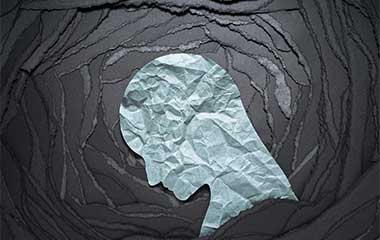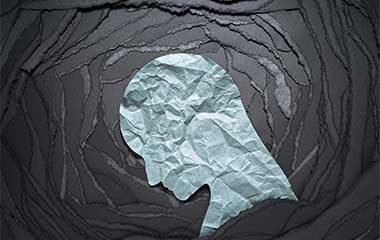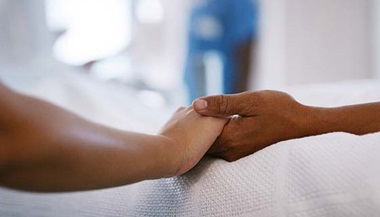Body Dysmorphic Disorder
What is body dysmorphic disorder?
Body dysmorphic disorder (BDD) is a mental health problem. If you have BDD, you may be so upset about the appearance of your body that it gets in the way of your ability to live normally. Many of us have what we think are flaws in our appearance. But if you have BDD, your reaction to this “flaw” may become overwhelming.
You may find that negative thoughts about your body are hard to control. You may even spend hours each day worrying about how you look. Your thinking can become so negative and persistent, you may think about suicide at times.
What causes body dysmorphic disorder?
The cause of body dysmorphic disorder is thought to be a combination of environmental, psychological, and biological factors. Bullying or teasing may create or foster the feelings of inadequacy, shame, and fear of ridicule.
What are the risk factors for body dysmorphic disorder?
Nobody knows the cause of BDD. It usually begins in your adolescence or teenage years. Experts think that about one of every 100 people has BDD. Men and women are equally affected. Factors that may contribute to BDD include:
- A family history of BDD or a similar mental disorder
- Abnormal levels of brain chemicals
- Personality type
- Life experiences
What are the symptoms for body dysmorphic disorder?
You can become obsessed with any part of your body. The most common areas are your face, hair, skin, chest, and stomach.
Symptoms of BDD include:
- Constantly checking yourself in the mirror
- Avoiding mirrors
- Trying to hide your body part under a hat, scarf, or makeup
- Constantly exercising or grooming
- Constantly comparing yourself with others
- Always asking other people whether you look OK
- Not believing other people when they say you look fine
- Avoiding social activities
- Not going out of the house, especially in the daytime
- Seeing many healthcare providers about your appearance
- Having unnecessary plastic surgeries
- Picking at your skin with fingers or tweezers
- Feeling anxious, depressed, and ashamed
- Thinking of suicide
How is body dysmorphic disorder diagnosed?
A mental health professional will diagnose BDD based on your symptoms and how much they affect your life.
To be diagnosed with BDD:
- You must be abnormally concerned about a small or nonexistent body flaw
- Your thoughts about your body flaw must be severe enough that they interfere with your ability to live normally
- Other mental health disorders must be ruled out as a cause of your symptoms
There are other mental health disorders that are common in people with BDD. They include obsessive compulsive disorder, social anxiety, depression, and eating disorders.
How is body dysmorphic disorder treated?
Specific treatment for BDD will be determined by your healthcare provider based on the following:
- The extent of the problem
- Your age, overall health, and medical history
- Your tolerance for specific medicines, procedures, or therapies
- Expectations for the course of the disorder
- The opinion of the healthcare providers involved in your care
- Your opinion and preference
Treatment for BDD may include talk therapy or medicines. The best treatment is probably a combination of the two. Cognitive behavioral therapy (CBT) is the most effective talk therapy. In CBT, you work with a mental health professional to replace negative thoughts and thought patterns with positive thoughts. Antidepressant medicines known as selective serotonin reuptake inhibitors usually work best for BDD.
What can I do to prevent body dysmorphic disorder?
The best way to prevent BDD from becoming a serious problem is to catch it early. BDD tends to get worse with age. Plastic surgery to correct a body flaw rarely helps. If you have a child or teenager who seems overly worried about his or her appearance and needs constant reassurance, talk with your healthcare provider. If you have symptoms of BDD yourself, talk with your healthcare provider or a mental health professional.
Living with body dysmorphic disorder
It’s important to follow your healthcare provider’s recommendations for treating your BDD. Treatment for BDD can be a long-term commitment.
When should I call my healthcare provider?
If your symptoms get worse or you experience new symptoms, tell your healthcare provider.
Key points about body dysmorphic disorder
- Body dysmorphic disorder (BDD) is a mental health disorder. If you have BDD, you may be so worried about the way your body looks that it interferes with your ability to function normally.
- You may take extreme measures such as repeated cosmetic surgical procedures to correct the perceived flaw.
- Treatment involves counseling and medicines to help with feelings of discomfort and anxiety.
- The fear of being judged creates avoidance of going into public and social isolation.
- Left untreated, BDD can lead to severe depression and suicidal thoughts and should not be ignored.
Next steps
Tips to help you get the most from a visit to your healthcare provider:
- Know the reason for your visit and what you want to happen.
- Before your visit, write down questions you want answered.
- Bring someone with you to help you ask questions and remember what your provider tells you.
- At the visit, write down the name of a new diagnosis, and any new medicines, treatments, or tests. Also write down any new instructions your provider gives you.
- Know why a new medicine or treatment is prescribed, and how it will help you. Also know what the side effects are.
- Ask if your condition can be treated in other ways.
- Know why a test or procedure is recommended and what the results could mean.
- Know what to expect if you do not take the medicine or have the test or procedure.
- If you have a follow-up appointment, write down the date, time, and purpose for that visit.
- Know how you can contact your provider if you have questions.





